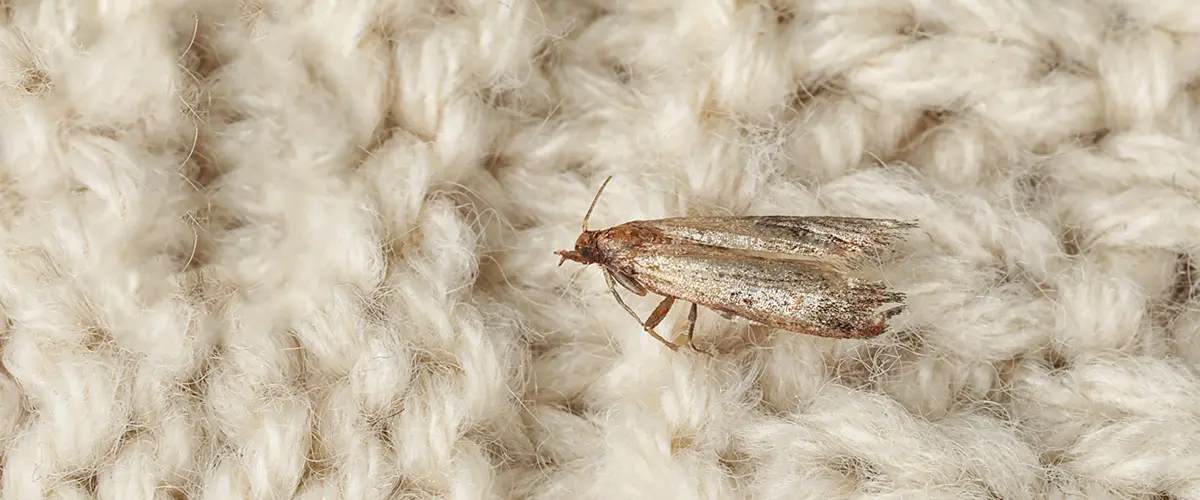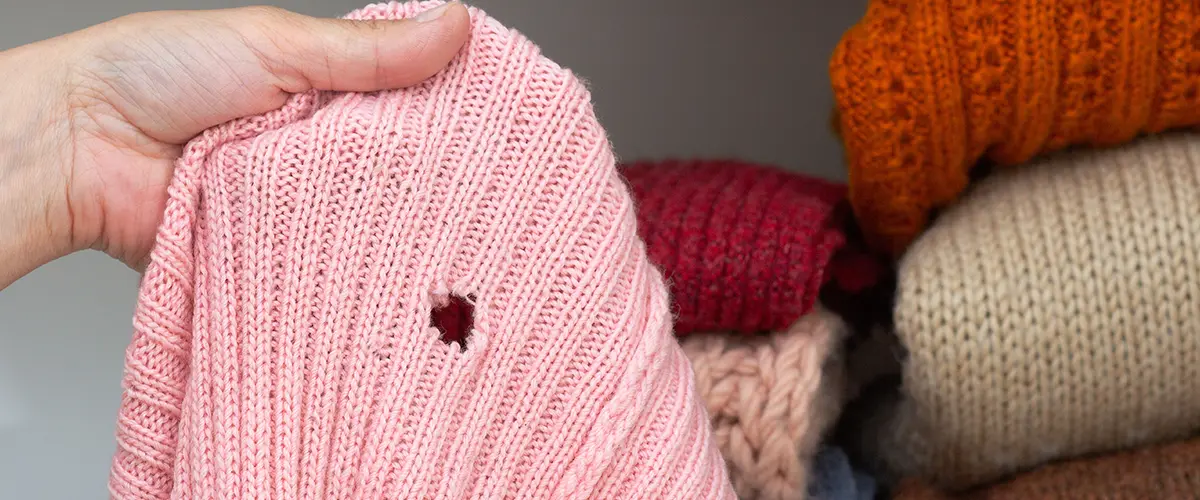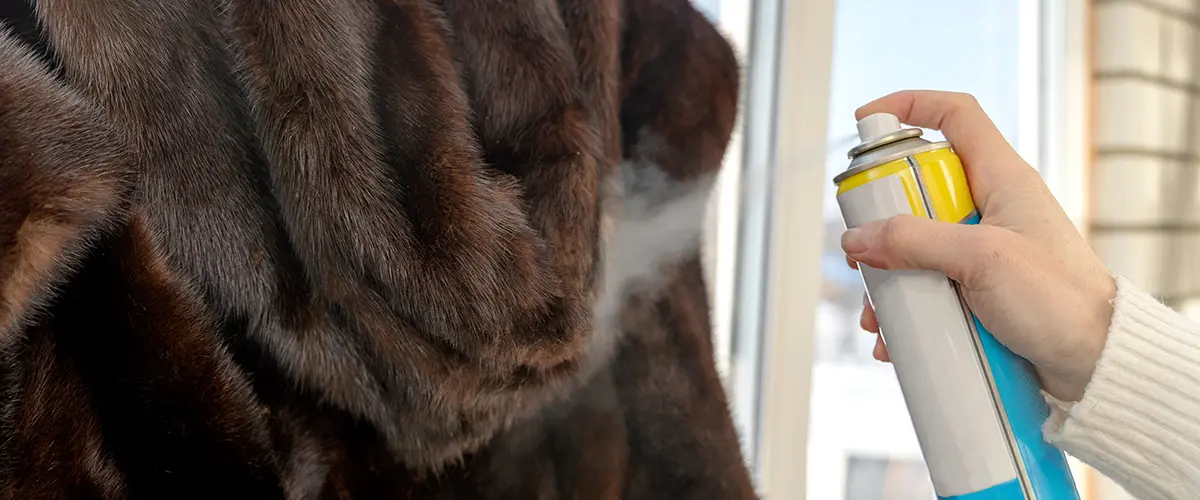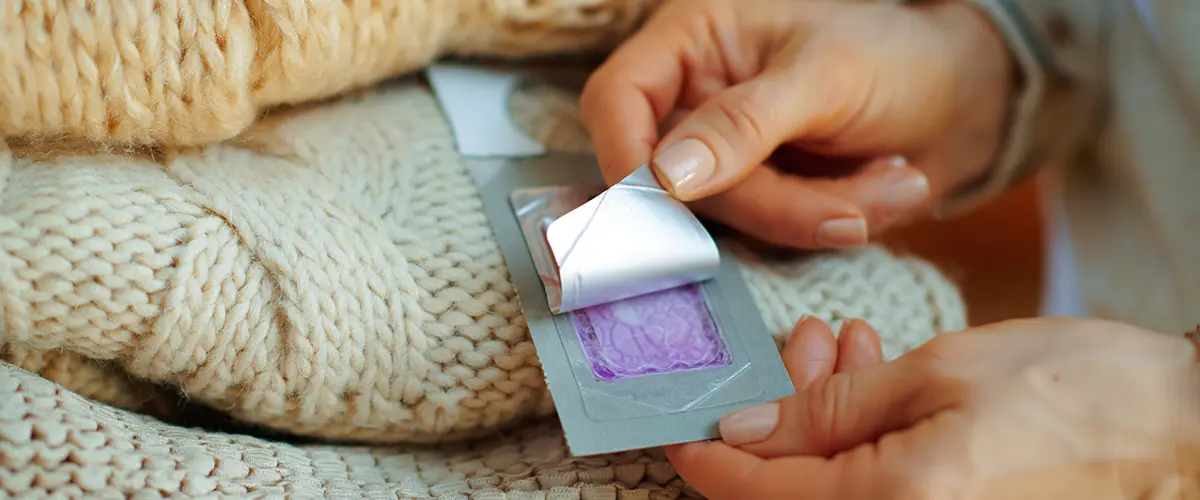Don’t let pests compromise the integrity and beauty of your custom closets. With our expert tips, you learn how to get rid of closet bugs and maintain your closets in pristine condition. Read further to equip yourself with the best preventative strategies against pests.
You can rid your custom closets of pests with the following five tips:
- Get familiar with common closet pests in your area so they don’t surprise you
- Wipe out “hot spots” and habitats by deep-cleaning your closets
- Organize your clothes into different categories depending on quality and condition
- Use pest control methods like pre-made repellents or home remedies
- Make a plan to keep pests from invading your closets in the future

Tip #1: Identify Common Closet Pests
Clothes Moths
According to Rutgers University University Publication, you can identify clothes moths by their tiny, white appearance. Adult moths have shiny, golden scales and can’t fly well.
They munch on materials like cotton, silk, wool, and leather. Sometimes you’ll spot a silky, thread-like residue around damaged areas.
Moth Prevention in Closets
- Keep closets clean and well-organized
- Regularly launder or dry-clean clothes to prevent moth attraction
- Consider storing off-season clothes in airtight containers
- Use mothballs or cedar chips to deter moths
- Handle mothballs with care due to their toxicity
- Utilize pest control products like moth traps
- Maintain a well-ventilated closet
- Regularly inspect closets for signs of moth damage

Silverfish
Silverfish are teardrop-shaped, silvery bugs with a flattened body and antennae. They’re carnivorous, preferring clothes, paper, and (unlike clothes moths) food.
Pestworld notes that silverfish also create holes in fabrics they feed on and sometimes leave indications of their presence with black, pepper-like droppings.
Getting Rid of Silverfish in Closets
- Maintain a Dry Environment: Silverfish are attracted to moisture. Use a dehumidifier to keep your closet dry and less appealing to silverfish.
- Clear the Clutter: Silverfish love hiding in piles of unused clothes or papers. Regularly decluttering your closet can reduce their hiding spots and discourage their presence.
- Use Cedar: Silverfish dislike the scent of cedar. Hanging cedar blocks or using cedar hangers can be an effective deterrent.
- Apply Diatomaceous Earth: This natural powder is a non-toxic insecticide that can be safely sprinkled in the corners of your closet, killing silverfish on contact.
- Professional Pest Control: If the infestation persists, consider calling in professional pest control services. They have the expertise and tools to safely and effectively eliminate silverfish from your closet.
Bonus Tip: Know The Other Types Of Closet Pests in Washington
Keeping your closets pest-free goes beyond merely dealing with moths and silverfish. In Washington, several other pests may try to invade your personal spaces. Let’s identify these unwelcome guests and discuss how you can deter them.
Carpet Beetles
Carpet beetles are tiny, round insects that come in various colors. According to the Washington State University Extension, they consume natural fibers and can cause significant damage to your clothes, especially those made of wool or silk.
Preventing Carpet Beetles
- Regularly vacuum your closet floor and shelves
- Ensure dry cleaning or laundering of clothes before storage
- Store off-season clothes in sealed plastic bags or containers
- Regularly inspect your closet for any signs of infestation
- Consider professional pest control if the infestation persists

Cockroaches
Preventing Cockroaches
- Keep your closet clean and free from clutter
- Ensure the area is dry and well ventilated
- Seal any cracks or openings in the closet walls or floor
- Use cockroach traps or baits
- Seek professional help if the infestation becomes overwhelming
Tip #2: Re-Organize Your Wardrobe
| Beyond Repair | Salvageable – Machine-Wash | Salvageable – Dry Clean Only |
|---|---|---|
| The fabric is too damaged to repair yourself | You can repair these items after a machine-wash cycle | You can repair but only dry clean the item |
- Immediately toss Beyond Repair items into a sealed trash bag.
- Sort your other clothes into the Machine-Wash and Dry Clean Only categories. Prep them in sealed trash bags until you’re ready to do laundry.
- Wash items in the washing machine in the hottest water permitted, according to their care labels.
- Bring your other items to the dry cleaners. The heat will kill the remaining pests.
- If unable to use heat, wrap salvageable items in a sealed plastic bag and store in the freezer for one day. Sub-zero temperatures also kill larvae.
- Shake your clothes free of any potential pests when finished, set them aside, and get ready to deep clean your closets.
Tip #3: Destroy Pest “Hot Spots” And Habitats
Understanding how common pests live and thrive helps you pinpoint their presence.
Clothes moths aren’t attracted to light. You can find them nestled under shirt collars, a common hiding spot.
Silverfish prefer humid and damp areas, as explained previously by Pestworld.org. Like clothes moths, they’re nocturnal, and avoid warmth and light.
To get rid of these squatters for good, make sure you vacuum your custom closets. Don’t neglect tough-to-reach areas like corners and crevices.
Follow your vacuum job with a pest-repellent spray before storing any clean clothing.

Tip #4: Introduce Pest Control Methods To Your Cleaning Routine
Investing in a custom closet helps protect your items from household pests. You can choose between pre-made repellents or try making your own.
Many stores offer generic mothballs and pest repellent value packs, but it’s important to check their ingredients and ensure they are natural, non-toxic, and fabric-safe for your wardrobe items.
Pro-tip: Before making a trip to the store, bring an old garment you want to discard and test potential repellents on its fabric.
If you prefer a DIY approach, consider buying cedarwood hangers as they naturally repel moths. You can also create your own natural repellent at home using herbs like lavender and rosemary. Simply place these herbs in a sachet bag, add a few drops of cedar or lavender oil, and hang them on your hangers.
Tip #5: Create A Preventative Pest Control Plan For The Future
- Wash any new clothes you bring into your home before storing them. You’ll weed out pests looking for food residue.
- Reduce clutter by using airtight bins. Even in a spacious custom closet, you’re bound to have a few crowded spaces. Store your seasonal items so they don’t become targets for pests.
- Deep clean weekly. Wipe down your closet walls and baseboards and vacuum every inch to clear out dust and dirt.

how to get rid of closet bugs FAQs
What kills closet bugs?
Closet bugs can be effectively killed using a combination of methods such as regular cleaning and vacuuming, use of suitable pest control treatments like sprays and traps, and maintaining a dry and well-ventilated environment.
For serious infestations, professional pest control services should be considered. These methods together help eliminate closet bugs and prevent future infestation.
What kills fabric bugs?
Fabric bugs can be eliminated by thorough cleaning of infested items in hot water, use of effective pest sprays and traps, and maintaining a clutter-free environment.
Professional pest management services might be required for severe infestations. It’s important to follow proper preventative measures to avoid future infestations.
What attracts closet moths?
Closet moths are primarily attracted to natural fibers like wool, silk, cashmere, and fur, which provide the necessary nutrients for their larvae.
They are also drawn to dark, quiet, and undisturbed areas where they can lay their eggs. Furthermore, closet moths are lured by dirt, sweat, or food particles left on clothing. Regular cleaning and maintenance of closets can help keep these pests at bay.
What can I put on my clothes to keep bugs away?
You can use natural repellents such as lavender, cedarwood, or mothballs to deter bugs from your clothes. Additionally, consider applying insect repellent sprays specifically designed for fabrics.
Always ensure that the product is non-toxic and safe for your particular type of clothing. Regular cleaning and maintenance of your clothes and closet space also play a crucial role in keeping bugs away.
Talk To Washington's Custom Closet Pros
Get in touch with us at Creative Closets at (425) 428-5073. We’re passionate about creating top custom closets that solve your storage needs while keeping pests at bay.
